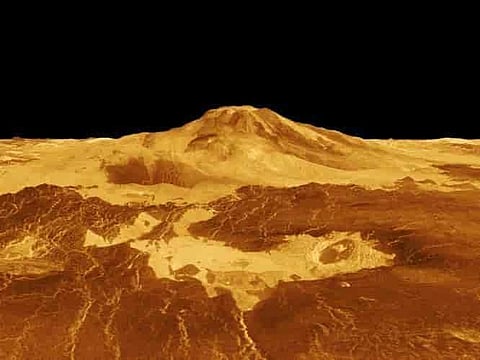

BENGALURU: After the successful Chandrayaan-3 and Aditya L-1 missions, the Indian Space Research Organisation (ISRO) is striving to push the country’s space-faring endeavours farther, setting its sight on Venus, also called the ‘Earth’s twin’.
ISRO Chairman S Somanath said the mission to Venus has been already configured and some payloads are under development. According to an ISRO official, the space agency plans to send a proposal to the Centre for approval of the mission, hoping to launch it in December next year.
Speaking at the Indian National Science Academy in New Delhi on Wednesday, the ISRO chief emphasised that studying Venus could help understand Earth’s future as billions of years ago the latter was also not habitable.
“Venus is a very interesting planet. It also has an atmosphere, which is so thick that you cannot penetrate the surface. We don’t know if the surface is hard or not.”
India’s Venus mission could be called ‘Shukrayaan-1’ -- ‘Shukra’ means Venus and ‘Yaana’ is craft or vehicle in Sanskrit.
The primary focus of the mission will be to study the Venusian surface and atmosphere, analysing its geological composition, which is said to be thick and filled with toxic clouds. The Venus mission could help one understand the relationship between solar radiation and the planet’s surface particles.
Some scientists theorise that microbes could exist in Venus’ clouds where it is cooler, and the pressure is similar to that on Earth’s surface. Detection of Phosphine could also be a possible sign of microbial life. But, more study is required. “Venus is permanently shrouded in thick, toxic clouds of sulphuric acid which start at an altitude of 45-70 km. The clouds smell like rotten eggs,” according to a NASA research paper. Surface temperature on the hottest planet in the solar system is about 475 degrees Celsius at which even lead can melt.
Venus was the first planet to be explored with NASA’s Mariner-2 expedition on December 14, 1962. Since then, numerous spacecraft from NASA, the European Space Agency (ESA), the erstwhile Soviet Union and Japan have made attempts to explore the planet.
Soviet (now Russian) spacecraft made the most successful landings on Venus. However, they failed to survive due to extreme heat and crushing pressure.
NASA’s Pioneer Venus Multiprobe survived for about an hour after impacting the surface in 1978, making Venus the most difficult planet to navigate. NASA’s Venus Emissivity, Radio Science, InSAR, Topography, and Spectroscopy (VERITAS) is set to launch in December 2027. ESA also plans to launch a spacecraft to Venus in the next couple of years.